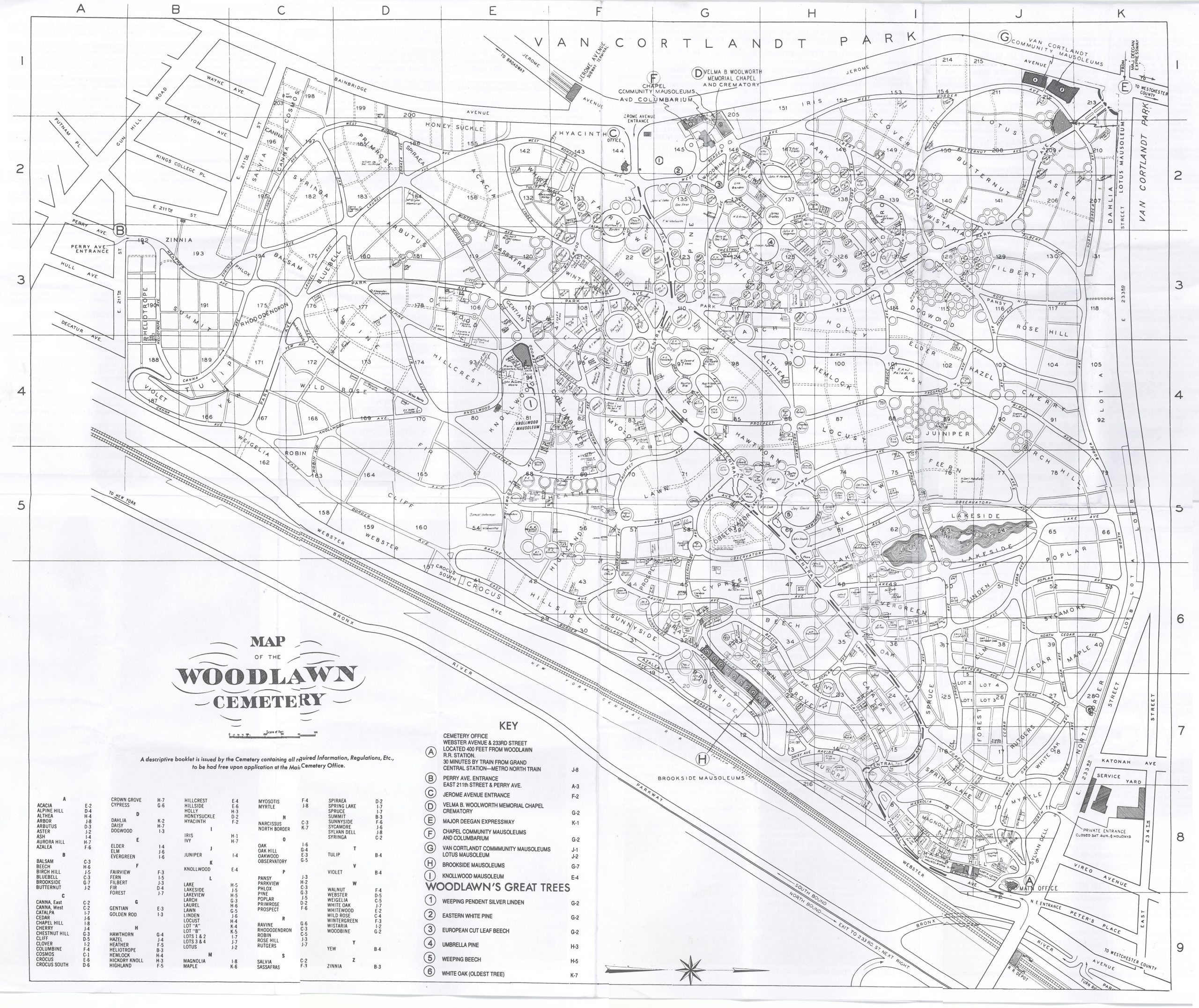Madam C. J. Walker
Fun Fact
Madam Walker is listed in the Guinness Book of World Records as the first self-made American woman millionaire, who neither inherited her money or married someone who was a millionaire. At the time of her death, Madam Walker’s estate had an estimated value of $600,000 to $700,000 (equivalent to approximately $8.9 million to $10.4 million in 2020 dollars according to the CPI Inflation Calculator). The total sales of her company, the Madam C. J. Walker Manufacturing Company, during the final year of her life reached more than $500,000, making the value of her company several times that amount. The combination of her personal assets (real estate, furnishings, jewelry, etc.) and the value of her business was well over $1,000,000 (equivalent to $14.9 million in 2020).
Cemetery Information:
Final Resting Place:
Woodlawn Cemetery
4199 Webster Avenue
Bronx, New York, 10470
USA
North America
Map:

Grave Location:
Butternut, Section 141, Plot 14052Grave Location Description
From the Jerome Avenue entrance drive straight ahead on Central Avenue. Turn left onto Park Avenue and head north for about 0.4 miles. Park your car at the intersection of Park Avenue and Filbert Avenue. Walk between the James mausoleum and the Miller mausoleum about 12 rows into the Butternut section for the final resting place of Madam C. J. Walker.
Grave Location GPS
40.893452, -73.877396Photos:
FAQ's
Read More About Madam C. J. Walker:
- Wikipedia Entry
- 5 Fast Facts about Madam C.J. Walker
- How Madam C.J. Walker Invented Her Hair Care Products
- Madam Walker, the First Black American Woman to Be a Self-Made Millionaire
- Madam C.J. Walker, the First Self-Made Female Millionaire in the U.S.
- The Real People in the Life of Madam C.J. Walker
- The Facts about Madam C. J. Walker and Annie Malone
- The Life of Madam C. J. Walker








